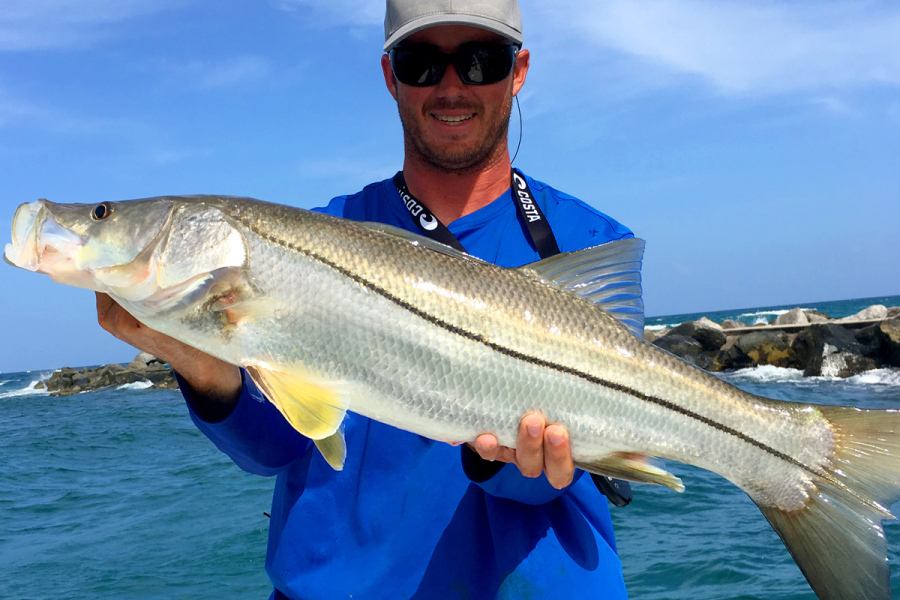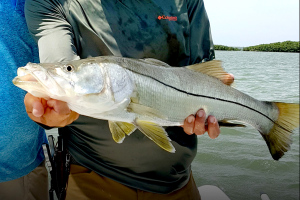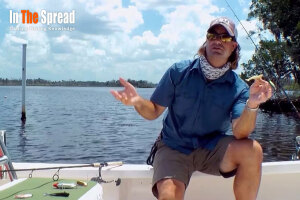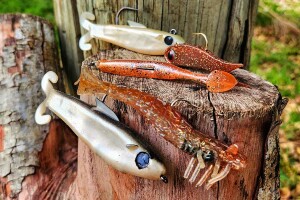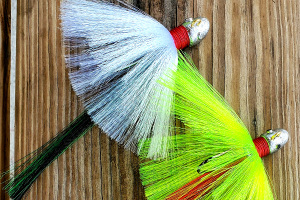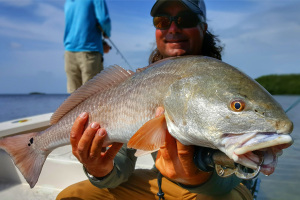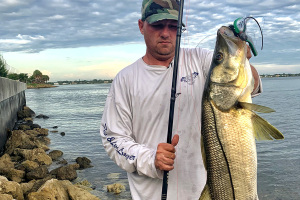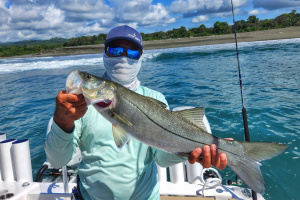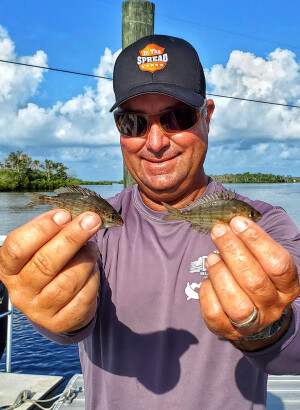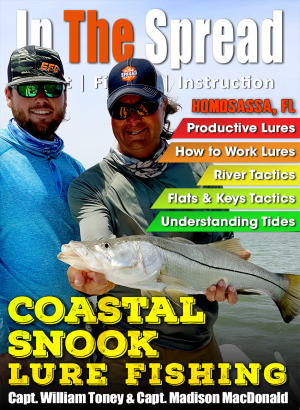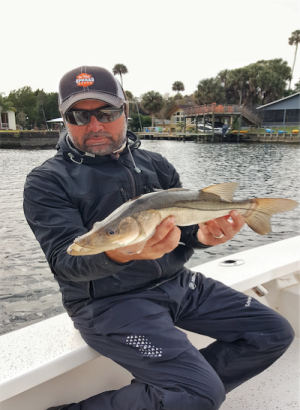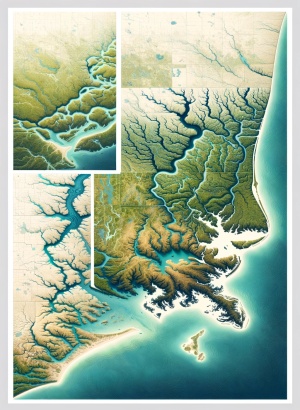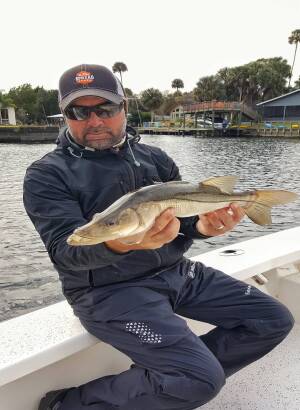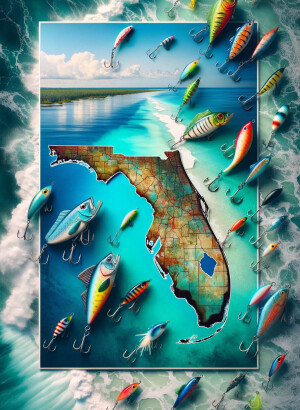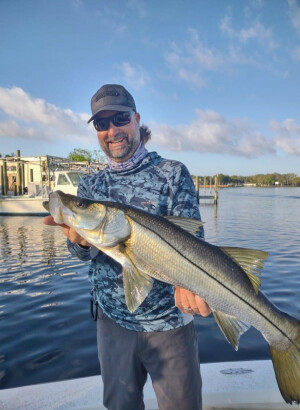Homosassa's warm springs and mangrove-lined waters create perfect snook habitat. Third-generation guide Capt. William Toney reveals effective lure techniques and seasonal strategies for catching Florida's most prized inshore gamefish in this Gulf Coast paradise.
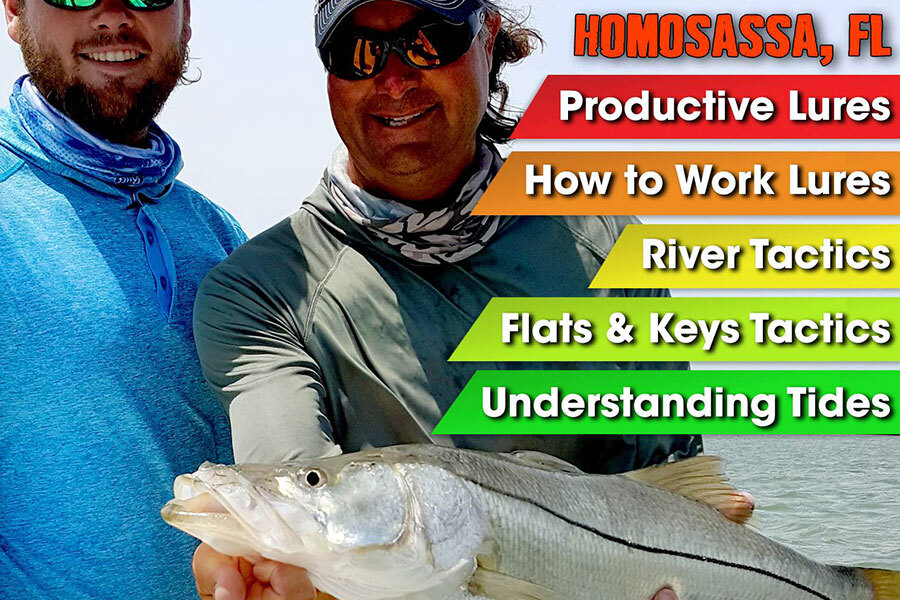
Coastal Snook Fishing Florida
Snook Fishing in Homosassa: Expert Techniques for Florida's Gulf Coast
Summary:
- Location: Homosassa, Florida's Gulf Coast
- Expert Guide: Capt. William Toney, a third-generation Florida fishing guide
- Fish Species: Snook, a coveted inshore predator
- Fishing Environment: Rivers, creeks, keys, mangrove islands
- Key Factors: Understanding snook behavior, seasonal patterns, water temperature
- Fishing Techniques: Using soft plastic artificial lures, varying techniques for different environments
- Insider Tips: Tactics for targeting big snook around the keys and mangroves
Nestled in the heart of Florida's Gulf Coast, Homosassa emerges as an angler's paradise, especially for those seeking the thrill of snook fishing. This narrative delves into the world of snook fishing in Florida, guided by the expert, Capt. William Toney.

The Heart of Snook Fishing in Homosassa
Homosassa stands out not merely as a geographical point on the map, but as a distinguished sanctuary for snook fishing enthusiasts. This region's remarkable topography, a harmonious blend of flowing rivers, meandering creeks, scattered keys, and dense mangrove islands, crafts an ecosystem that is nothing short of perfect for snook, often revered as the most prized inshore predators.
These intricate waterways offer diverse habitats and hunting grounds for the snook. The rivers and creeks serve as thriving channels where snook can hunt and hide, while the keys and mangroves provide essential shelter and breeding grounds, crucial for their lifecycle. This variety in landscape not only challenges anglers but also offers them a myriad of fishing experiences within a relatively compact area.
Adding to this ecological richness, Homosassa's waters are caressed and warmed by first magnitude springs. These natural springs play a pivotal role in maintaining a stable water temperature, a critical factor for the survival of snook, particularly during Florida's cooler months. The consistent warmth afforded by these springs ensures that the snook population remains robust and active throughout the year, unlike in other regions where colder temperatures may lead to a decrease in snook activity or even mortality.
This unique environmental tapestry makes Homosassa an unparalleled destination for snook fishing. Anglers here are not just engaging in a sport but immersing themselves in a vibrant, dynamic ecosystem where the pursuit of the elusive snook becomes an adventure that blends the thrill of the catch with a deep appreciation for the natural world. Whether a seasoned fisherman or a novice, the waters of Homosassa promise an enriching experience, making it a true haven for snook fishing.
The Art of Snook Fishing with Capt. William Toney
Capt. William Toney, renowned as a master in the art of snook fishing, generously shares his extensive expertise through a series of informative videos, becoming a virtual mentor to anglers of all levels. His insights delve deep into the subtleties of snook fishing, particularly focusing on the effective use of artificial lures, a skill that distinguishes the novice from the seasoned angler.
In his videos, Capt. Toney meticulously breaks down the complex process of targeting snook. He provides detailed explanations on how to select the right artificial lures, considering factors like water clarity, depth, and snook behavior patterns. His demonstrations on lure selection are not just instructional but also steeped in the practical wisdom gained from years of experience on the waters of Florida.
Moreover, Capt. Toney goes beyond just the choice of equipment. He educates viewers on how to identify promising fishing spots, a crucial skill in snook fishing. He explains how to read the natural signs in the environment, such as water movement and fish behavior, to locate areas where snook are likely to be feeding or hiding. This knowledge is invaluable for anglers aiming to increase their catch rate.
Perhaps most compelling are his techniques for working with soft plastics – a preferred lure for snook fishing. Capt. Toney demonstrates various retrieval techniques, showing how different movements of the lure can mimic natural prey, thereby attracting snook. He emphasizes the importance of adapting these techniques to different conditions, such as varying water currents and terrains, to effectively entice these elusive predators.
Capt. Toney's videos are not just instructional; they are a treasure trove of accumulated wisdom, offering viewers a comprehensive understanding of snook fishing. His teachings help anglers develop a deeper connection with the sport, fostering skills that go beyond the basics and into the realm of artistry in angling.
Learn Florida Snook Fishing
Understanding Snook Behavior
Snook, renowned for their adaptability, exhibit fascinating migratory and behavioral patterns that are closely tied to environmental cues, particularly changes in season and water temperature. This adaptive nature is a key survival strategy, allowing them to thrive in the diverse habitats found along Florida's coast.
During different times of the year, snook navigate through various aquatic landscapes, each move dictated by the need for optimal living conditions. In warmer months, they are often found in the shallower waters of rivers and estuaries, capitalizing on the abundance of prey. As the temperature drops, they migrate towards deeper, warmer waters, often found around the keys and mangroves. These areas not only provide a more stable thermal environment but also offer ample shelter and food sources, essential for their sustenance during colder periods.
Understanding these migratory patterns is crucial for anglers seeking to successfully catch snook. It involves recognizing the seasonal shifts and how they influence snook behavior, including their feeding habits and preferred habitats. Anglers must adapt their strategies accordingly, choosing the right locations and employing appropriate fishing techniques that align with the snook's current behavior and environment.
This knowledge of snook migration and adaptability enriches the fishing experience, transforming it from a mere pursuit of catch to a deeper understanding of the natural rhythms and behaviors of one of Florida's most sought-after game fish. For those who learn to read these natural signs and adapt alongside the snook, the rewards go beyond the thrill of the catch; they gain a profound connection with the natural world and a greater appreciation for the intricate balance of aquatic ecosystems.
Techniques and Tactics
Capt. Toney's preference for soft plastic artificial lures in snook fishing is rooted in their versatility and effectiveness, which he expertly demonstrates in his instructional videos. These lures, which come in various shapes, sizes, and colors, are highly adaptable to different fishing conditions and environments, making them a favorite among many seasoned anglers.
In his tutorials, Capt. Toney emphasizes the importance of technique adaptation based on the specific environment. For instance, when fishing in riverine settings, where snags and underwater debris are common, he advocates for a sweeping motion. This technique involves moving the lure in a broad, lateral arc, which helps in avoiding snags while still presenting the lure effectively to snook, who are often lurking near structures.
Conversely, in clearer and more open waters, such as flats or areas around keys where visibility is higher and snags are less of a concern, Capt. Toney demonstrates an up-and-down motion. This technique mimics the natural movement of prey fish or crustaceans and can be more enticing to snook in these environments. It involves a rhythmic jigging action that makes the lure dive and then float up, provoking snook to strike.
Capt. Toney's videos are more than just fishing lessons; they are a comprehensive guide to understanding the behavior of snook in relation to their environment and how to adapt lure techniques accordingly. These tactics, demonstrated with clarity and expertise, are invaluable to anglers of all levels, offering insights that can significantly enhance their fishing skills and success rates.
Targeting the Big Snook
The pursuit of larger snook, often considered a pinnacle achievement for anglers, involves understanding their unique behavioral patterns, especially their preference for certain habitats. These larger, more mature snook are known to gravitate towards the outside keys and mangrove-lined shores. In these areas, they find not only the ideal conditions for shelter but also abundant opportunities for feeding.
What makes these areas particularly favorable for big snook is the combination of protective cover provided by mangroves and the rich supply of bait fish that thrive in these waters. The mangroves offer a complex structure that allows the snook to ambush prey effectively, while the surrounding waters are continually replenished with food sources, carried in by tidal flows and currents.
Capt. Toney, with his extensive experience and keen observations, offers invaluable advice on how to locate the best spots for targeting these larger snook. He emphasizes the importance of understanding how wind and water currents affect the movement and behavior of bait fish, as this in turn influences where the big snook will be feeding. He suggests looking for areas where currents create natural feeding zones, such as points, eddies, or channels near the mangroves or keys.
Moreover, Capt. Toney advises on the importance of stealth and precision in these environments. Since larger snook can be more cautious and experienced, approaching these prime spots quietly and casting accurately becomes critical. His expert tips not only increase the chances of hooking a big snook but also enhance the overall fishing experience, combining the thrill of the hunt with a deep respect for the intelligence and survival instincts of this coveted game fish.
Preparing for Snook Season
The snook season in Florida, eagerly anticipated by anglers, marks a period of vibrant activity and excitement in the fishing community. This season, typically regulated to ensure the sustainability of the snook population, offers anglers the opportunity to test their skills against one of the most sought-after game fishes in the region.
To make the most of this season, having the right fishing setup is crucial. This includes selecting the best lures and baits specifically designed for snook. Soft plastic lures, topwater plugs, and live baits like shrimp or mullet are often favored for their effectiveness in attracting snook. The choice of bait and lure can vary depending on the water conditions, time of day, and snook behavior. Additionally, the right gear, such as a sturdy rod with good sensitivity, a reliable reel, and the appropriate line strength, plays a significant role in successfully landing a snook.
For those seeking an immersive and potentially more fruitful fishing experience, opting for a snook fishing charter in Homosassa is a splendid idea. These charters are typically led by experienced guides like Capt. Toney, who have in-depth knowledge of the local waters, snook behavior, and the most productive fishing spots. A charter experience not only increases the chances of a good catch due to the guide's expertise but also provides a comprehensive learning experience. Anglers can pick up new techniques, learn about the local ecosystem, and enjoy the beauty of Homosassa's waters, all while engaging in the thrilling pursuit of snook.
The snook season thus transforms into a time not just for fishing, but for community, learning, and celebrating the rich fishing culture that Florida is known for. Whether one is a seasoned angler or a beginner, participating in this season's activities, especially through a charter experience, is a way to deepen one's connection with the sport and the environment.
Conclusion: Embrace the Adventure
Capt. Toney's guidance transforms snook fishing into an enriching experience, merging the excitement of the catch with the serene beauty of Florida's Gulf coast. This guide not only teaches you the techniques for snook fishing but also invites you to become part of the vibrant fishing community in Homosassa. So grab your gear, and let the adventure begin - the snook are waiting.
Seth Horne In The Spread, Chief Creator
